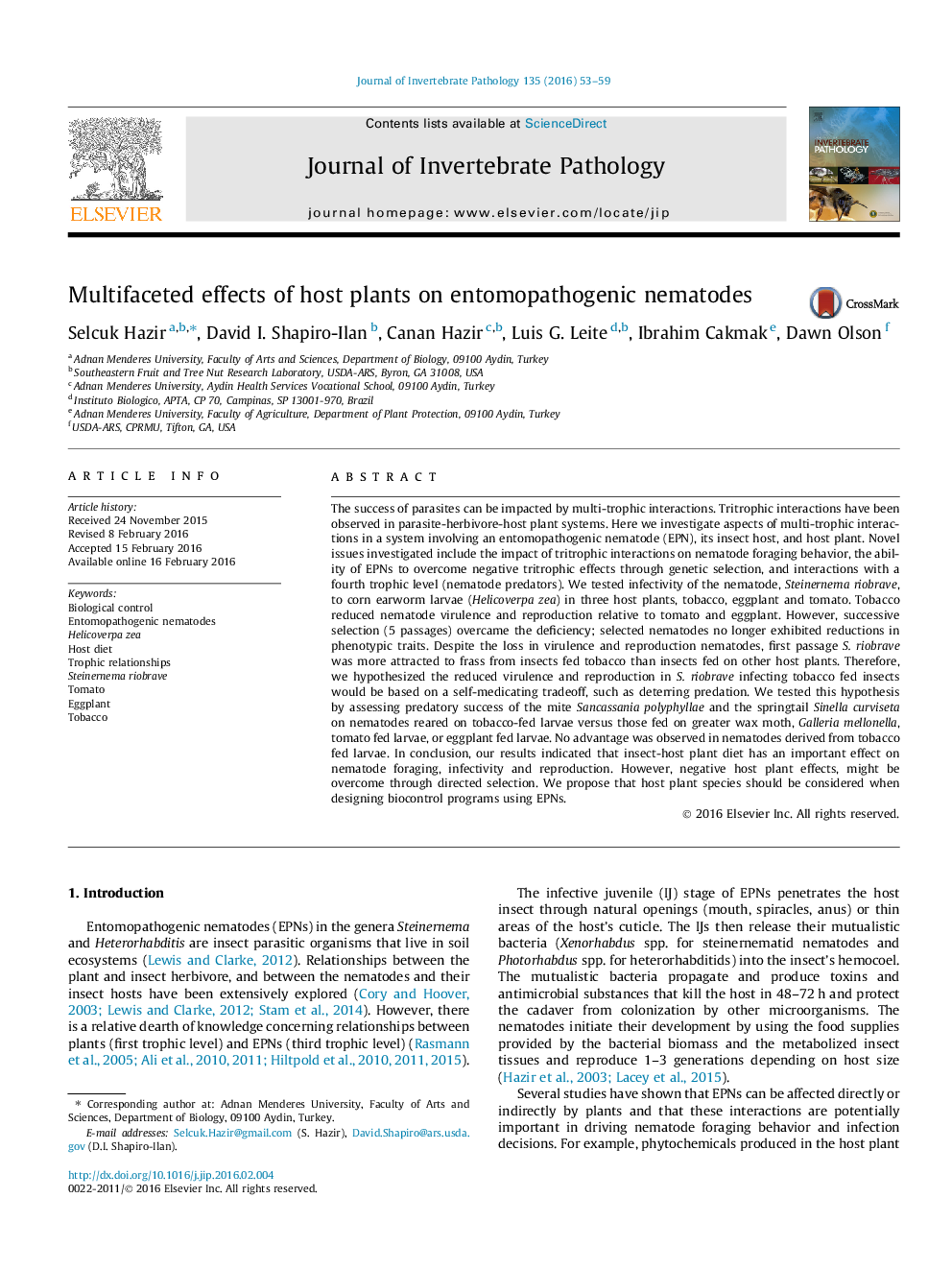| کد مقاله | کد نشریه | سال انتشار | مقاله انگلیسی | نسخه تمام متن |
|---|---|---|---|---|
| 4557519 | 1628217 | 2016 | 7 صفحه PDF | دانلود رایگان |
• Tobacco fed corn earworm reduced nematode virulence and reproduction relative to tomato and eggplant.
• However, successive selection overcame the deficiency.
• Despite fitness loss, S. riobrave was more attracted to frass from tobacco-fed insects.
• No advantage (trade-off) was observed in nematodes derived from tobacco fed larvae.
• Insect-host plant diet had a profound effect on nematode foraging, infectivity and reproduction.
The success of parasites can be impacted by multi-trophic interactions. Tritrophic interactions have been observed in parasite-herbivore-host plant systems. Here we investigate aspects of multi-trophic interactions in a system involving an entomopathogenic nematode (EPN), its insect host, and host plant. Novel issues investigated include the impact of tritrophic interactions on nematode foraging behavior, the ability of EPNs to overcome negative tritrophic effects through genetic selection, and interactions with a fourth trophic level (nematode predators). We tested infectivity of the nematode, Steinernema riobrave, to corn earworm larvae (Helicoverpa zea) in three host plants, tobacco, eggplant and tomato. Tobacco reduced nematode virulence and reproduction relative to tomato and eggplant. However, successive selection (5 passages) overcame the deficiency; selected nematodes no longer exhibited reductions in phenotypic traits. Despite the loss in virulence and reproduction nematodes, first passage S. riobrave was more attracted to frass from insects fed tobacco than insects fed on other host plants. Therefore, we hypothesized the reduced virulence and reproduction in S. riobrave infecting tobacco fed insects would be based on a self-medicating tradeoff, such as deterring predation. We tested this hypothesis by assessing predatory success of the mite Sancassania polyphyllae and the springtail Sinella curviseta on nematodes reared on tobacco-fed larvae versus those fed on greater wax moth, Galleria mellonella, tomato fed larvae, or eggplant fed larvae. No advantage was observed in nematodes derived from tobacco fed larvae. In conclusion, our results indicated that insect-host plant diet has an important effect on nematode foraging, infectivity and reproduction. However, negative host plant effects, might be overcome through directed selection. We propose that host plant species should be considered when designing biocontrol programs using EPNs.
Figure optionsDownload as PowerPoint slide
Journal: Journal of Invertebrate Pathology - Volume 135, March 2016, Pages 53–59
